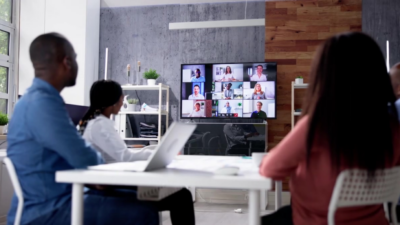The rapid escalation in sublease office space has been a headline story in the U.S. for the past five quarters. As a result, a record 208.6 million square feet of sublease space is available across the U.S. office market, significantly higher than the prior peak of 143.3 million square feet seen in Q2 2009 at the height of the global financial crisis.
Additions of sublease space totaled 6.4 million square feet in Q2 2021, bringing the increase over the past five quarters to 71%. However, the rate at which sublease space is being added has been slowing for three consecutive quarters.
There are notable variations of the impact of sublease space in the top 10 U.S. office markets. Total sublease space available across these markets stands at 100.5 million square feet, up from 89.8 million square feet at year-end 2020. Just over one-fifth of this space (20.8 million square feet) is in Manhattan. Los Angeles has the next highest amount, with 12.2 million square feet, followed by Chicago (10.6 million square feet) and Washington, D.C. (9.1 million square feet.) Encouragingly, Boston saw a slight decrease in the amount of available sublease space in Q2 2021, while levels in Dallas held steady.

Square footage alone tells only part of the story. A more compelling statistic is the sublease availability rate. In this regard, San Francisco is by far the most beleaguered market with an 8.8% sublease availability rate. A series of major givebacks by tech firms, some of whom have chosen not to occupy new premises that were pre-leased, has been a key factor in driving up these levels.
Another tech-driven market, Seattle, follows next with a 4.3% sublease availability rate. The average rate across the top 10 markets is 3.5%. Washington, D.C. and Atlanta are the least impacted, with sublease availability rates of 2.1% and 2.4%, respectively.
Some of the sublease space on the market is of Class A quality, with high-end fit-outs and decent remaining term. Such space is providing competition to the direct leasing market as it is being offered at a significant rental discount. In a period of uncertainty over future work patterns, business performance and space needs, sublease space can be an attractive short-term option for firms waiting for further clarity on the future.

The average discount in asking rents between Class A direct and sublease space in the downtown areas of the top 10 office markets has been trending in the 25% to 30% range, and currently stands at 26.7%. Given their vacancy rates of over 20%, it is not surprising that Houston and Dallas have the greatest sublease rental discounts at 49.2% and 37.5%, respectively. Downtown Chicago also ranks high with a 34.9% discount. Silicon Valley has by far the lowest discount at just 10.8%.
How will this play out? As tenants return to the market, and leasing velocity picks up, look for landlords to potentially become more competitive. Asking rents for direct Class A space have mostly held firm during the downturn to date, with some reductions taking place in Manhattan, San Francisco and Seattle. However, the gap between asking and starting rents is widening due to increased concessions on offer.
Look for the volume of sublease space to start trending down in 2022 as more firms return to the office and decide to utilize previously offered space. However, as business confidence rises, tenants will be more comfortable taking longer-term leases, and while sublease options exist, we anticipate a pick-up in direct leasing activity.

 Stephen Newbold
Stephen Newbold
 Anthony Shell
Anthony Shell
 Andrew Steele
Andrew Steele
 Aaron Jodka
Aaron Jodka Michelle Cleverdon
Michelle Cleverdon